biology
Clytus relictus, so far known only from the vicinity of the mountain village of Chamaloc in the Drôme department, is a montane species developing in the Alpine buckthorn (Rhamnus alpina) in a relatively narrow altitudinal belt from 1400 to 1600 m above sea level. The locality is situated in the limestone Vercors massif (French Prealps) and is characterised by rather pronounced karst phenomena.
Clytus relictus has quite specific requirements for development, the larva does not develop in healthy, well-grown buckthorn shrubs with good conditions for growth (typical for alpine meadows) but in shrubs damaged by rock avalanches in karst debris fields, exposed to sun and wind and often in places with minimal soil cover. These are often shrubs characterised by small stature and a large number of dying or dead shoots. According to our observations, the conditions are also met mostly in the south exposed places of relatively steep slopes covered by stone fields.
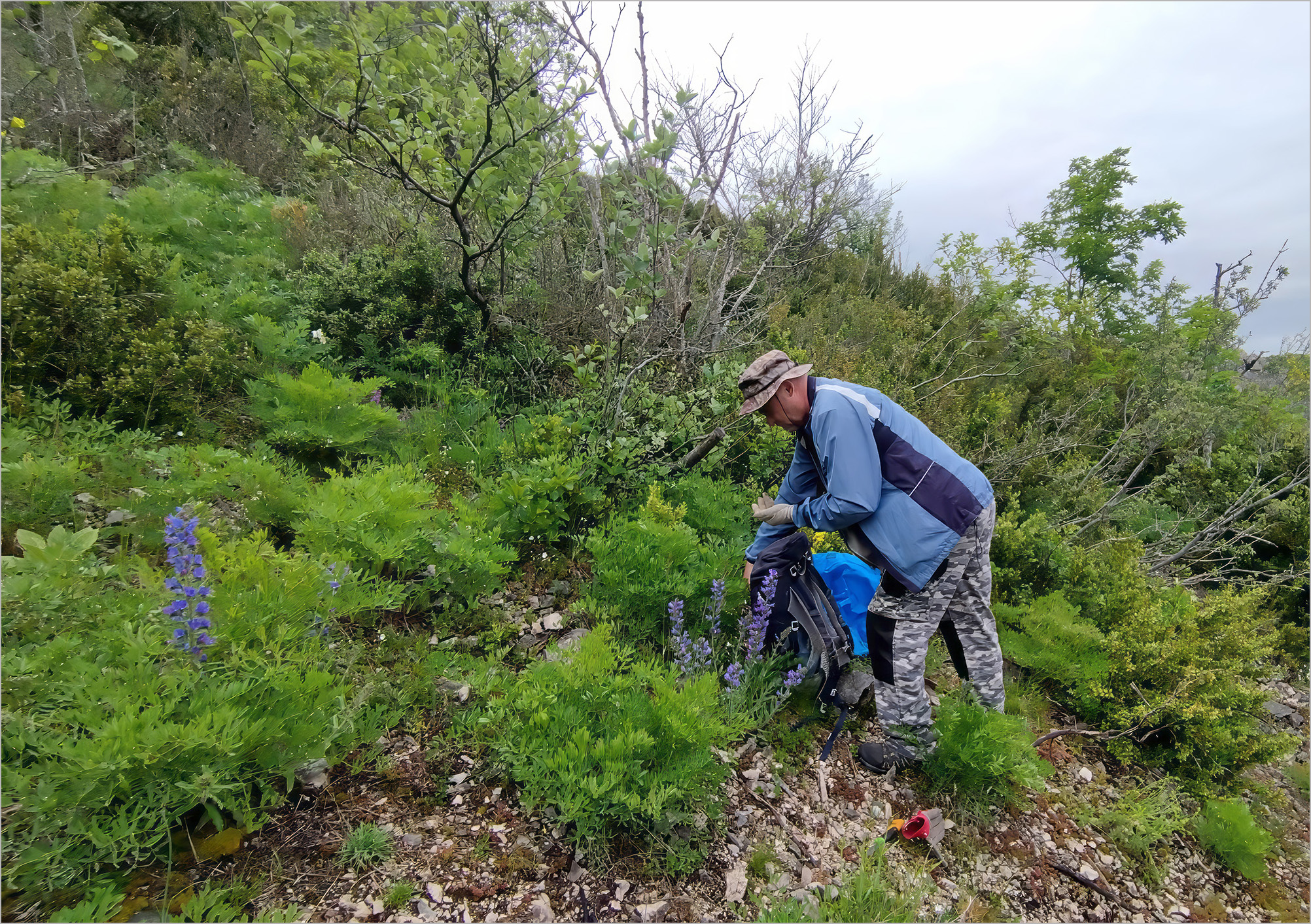
[Photo © David Navrátil]
↑ - A typical look of Clytus relictus locality with Alpine buckthorn (Rhamnus alpina) growth.
↓ - Alpine buckthorn (Rhamnus alpina) shrubs attacked by Clytus relictus.
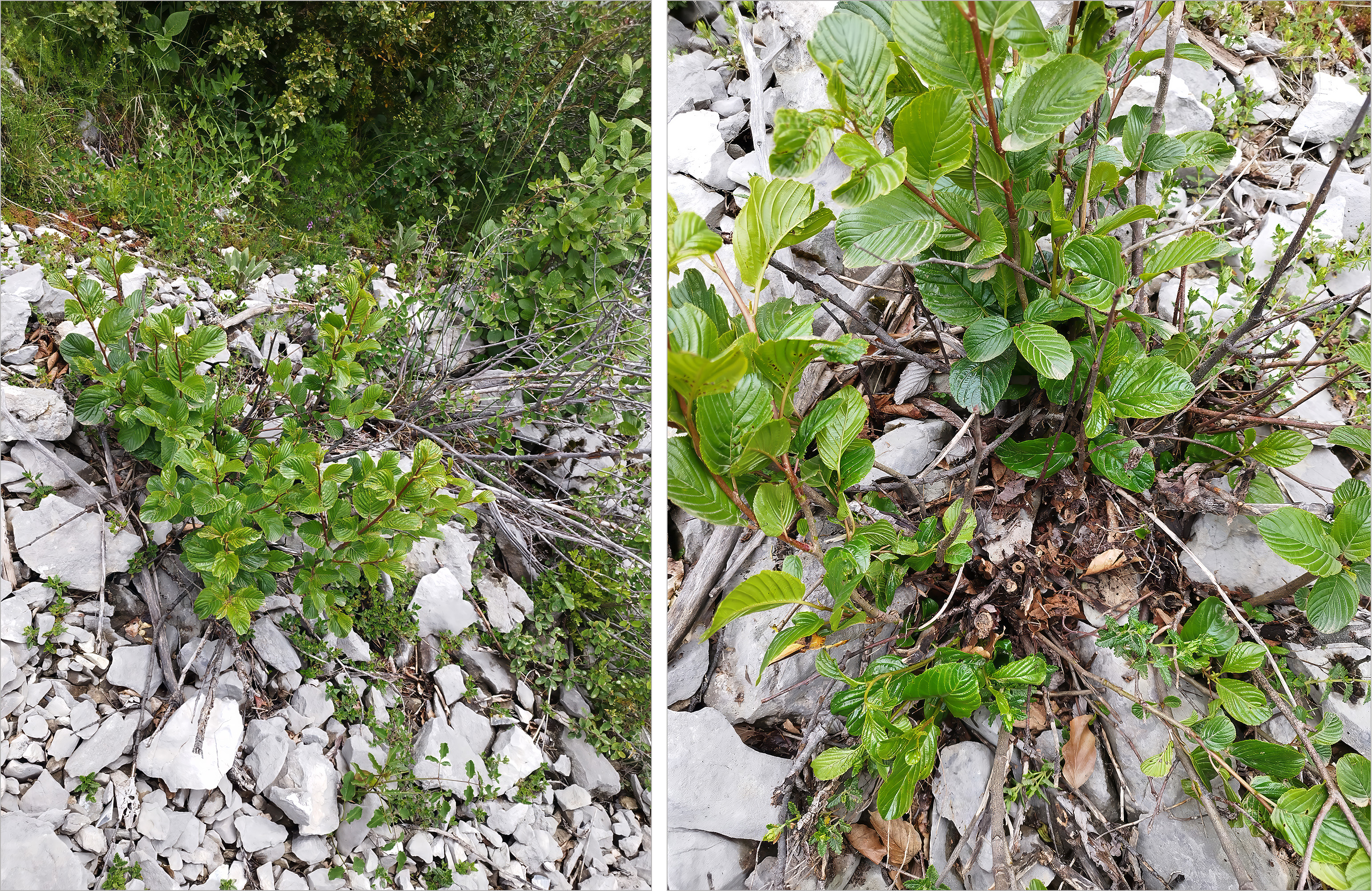
[Photo © David Navrátil]
C. relictus females lay eggs in dying, drying or freshly dead thin buckthorn branches, usually 5-20 mm in diameter. Young larvae initially develop subcortically, later entering the heartwood where they continue to feed. The pupal cell is located at the end of the gallery (ca 15 cm long) and is plugged with coarse shavings. Several larvae (!) can develop in parallel in one relatively thin branch. Development is at least biennial according to the larvae of different instars in one branch found. The exit hole is circular. Adults hatch during spring and emerge from the pupal cell in the host tree in early June (depending on the weather of the year).
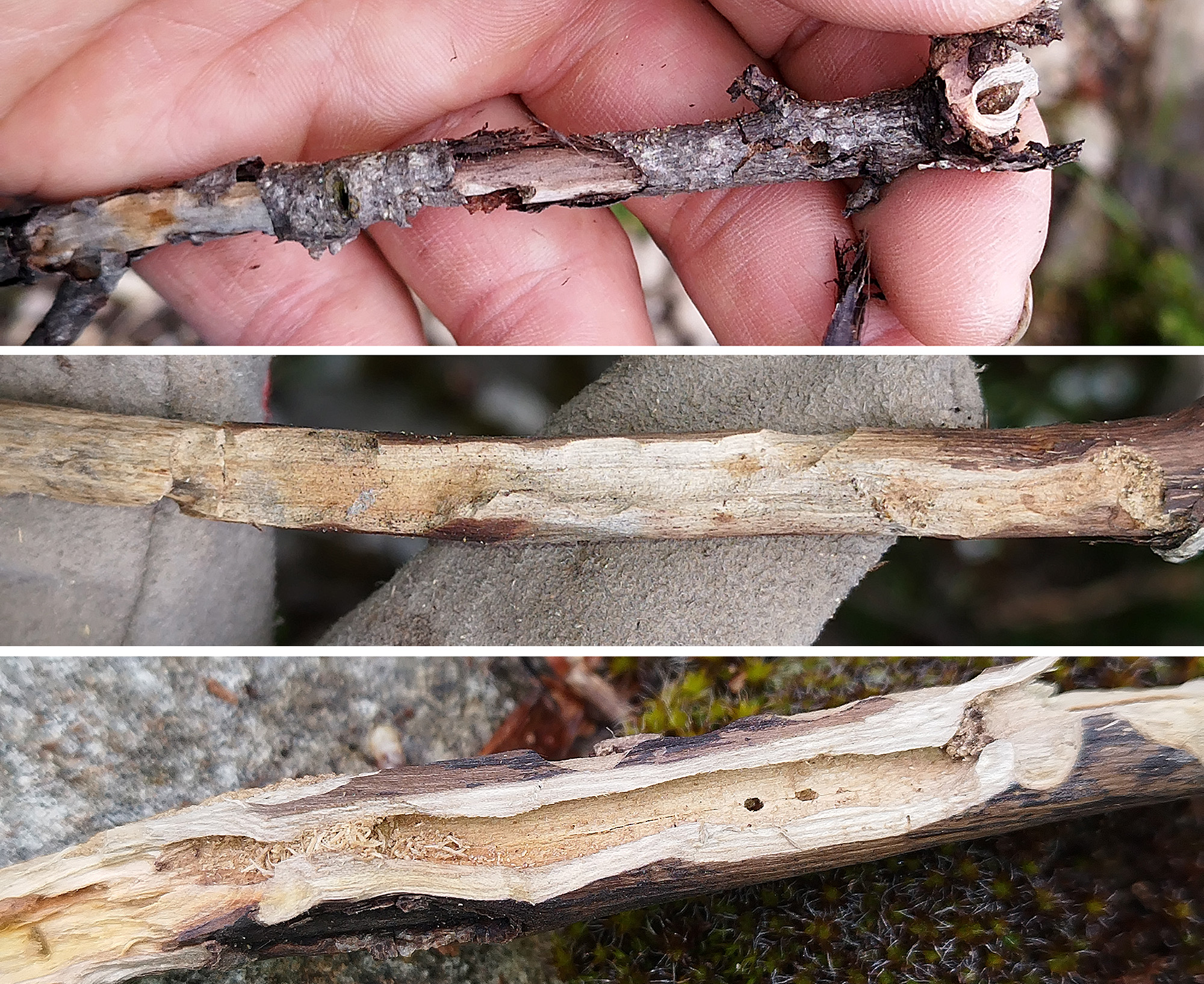
[Photo © David Navrátil]
Branches of Alpine buckthorn (Rhamnus alpina) attacked by Clytus relictus (old and recent infestations).
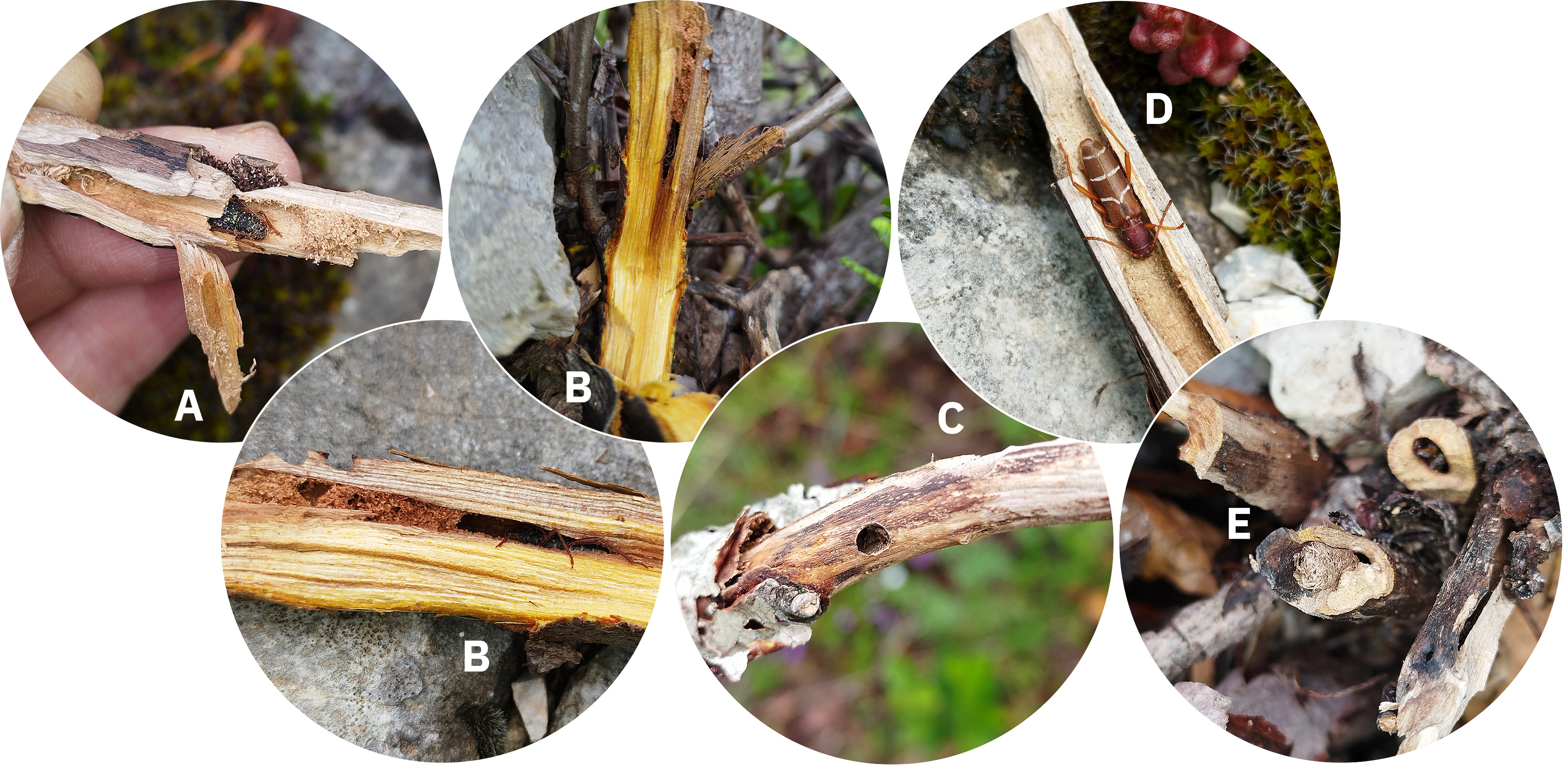
[Photo © David Navrátil, click on the picture for 4K resolution]
Alpine buckthorn (Rhamnus alpina) - some other interesting ascpects of the Clytus relictus infestation.
- Example of "double" infestation of relatively thin bucktorn branch with one freshly hatched aduld of Clytus relictus
- Although we mostly observed C. relictus larval development in dead wood, we also found cases of development at the interface between dead and living wood.
- Old emergency hole in a dead buckhorn branch.
- Immature, freshly emerged Clytus relictus in the larval gallery.
- Infested branches in the cluster of a small dead Alpine buckthorn bush.
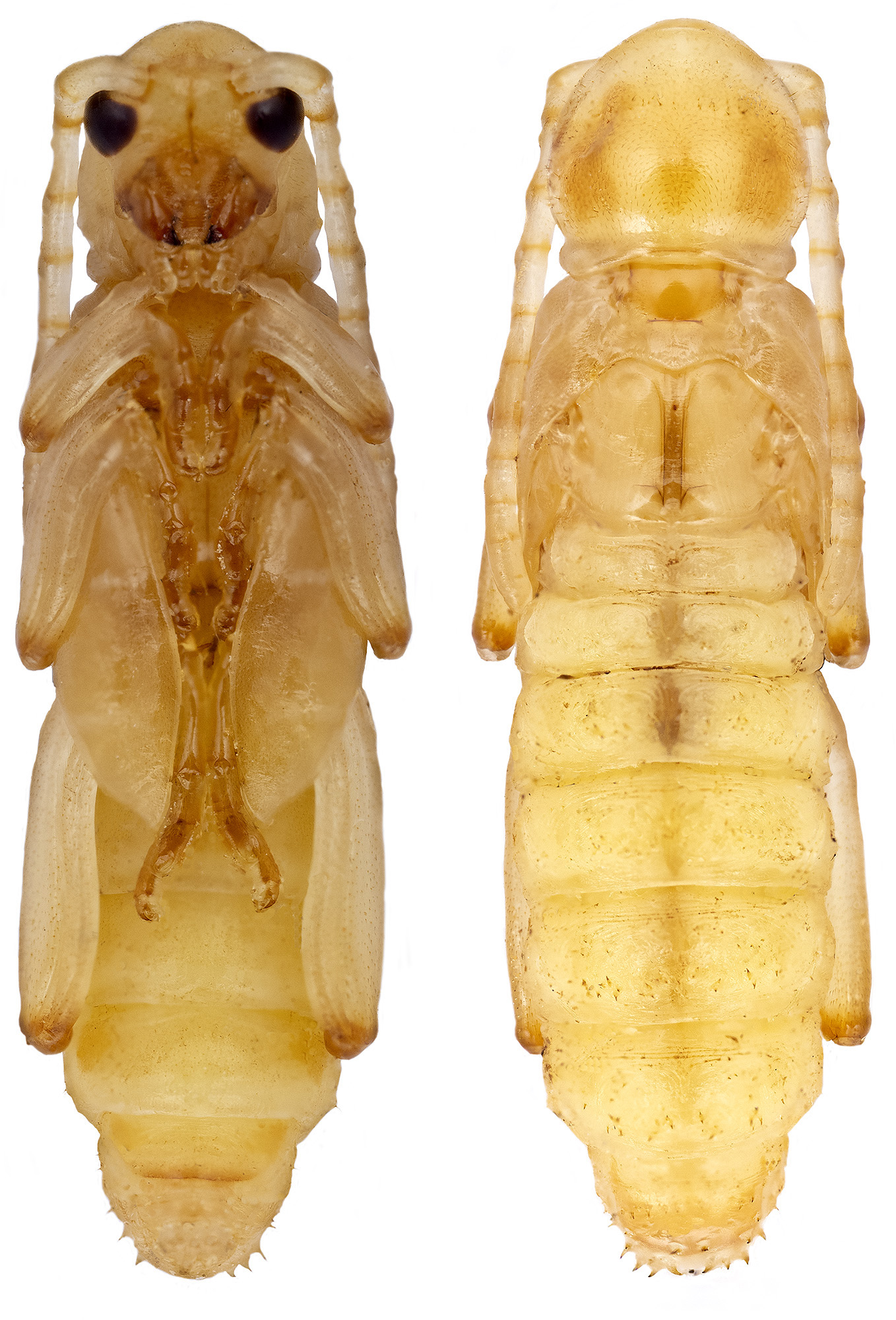
[Photo © David Navrátil]
Pupa of Clytus relictus.
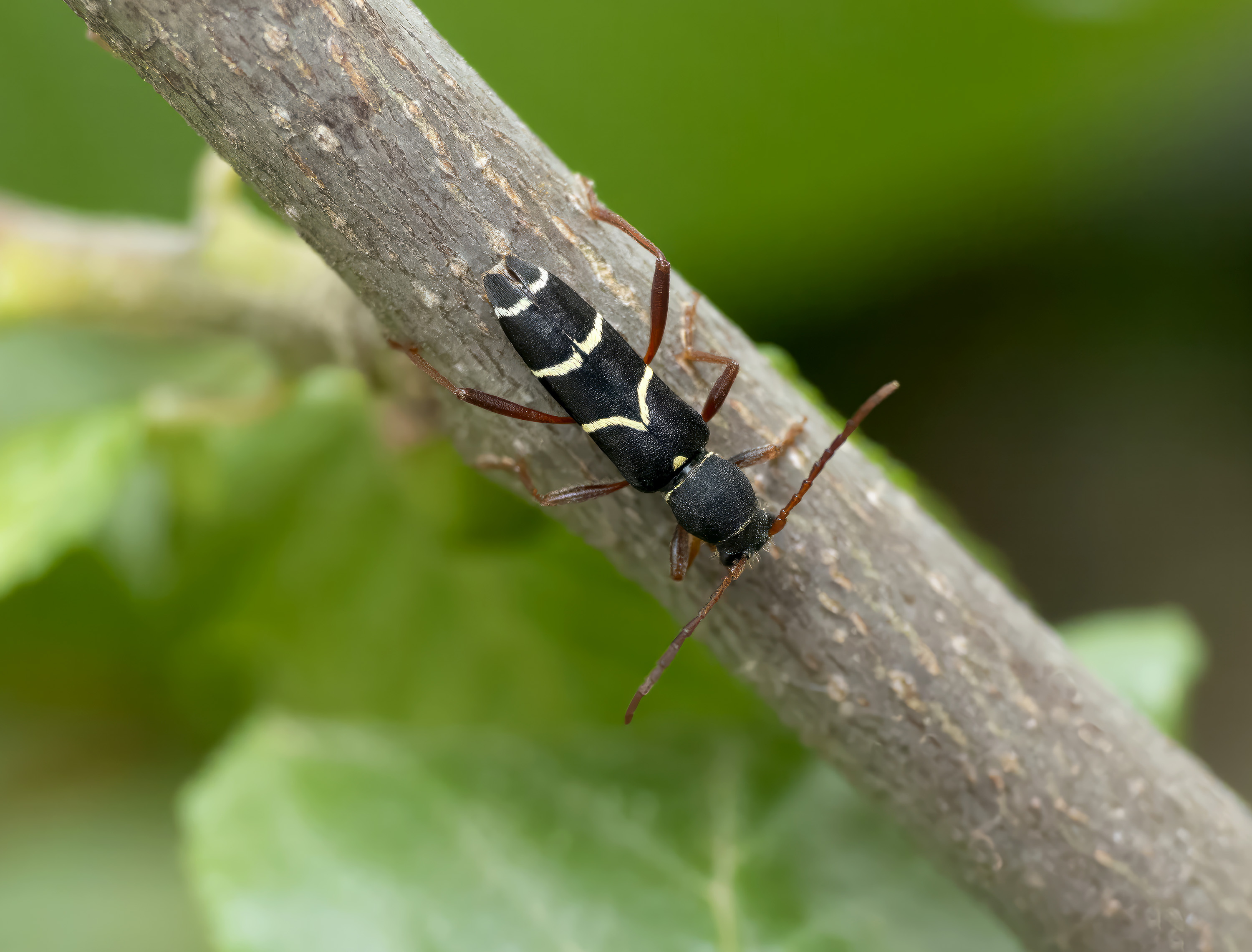
[Photo © David Navrátil]
Clytus (Clytus) relictus Jacquot, 2022 in natura...
